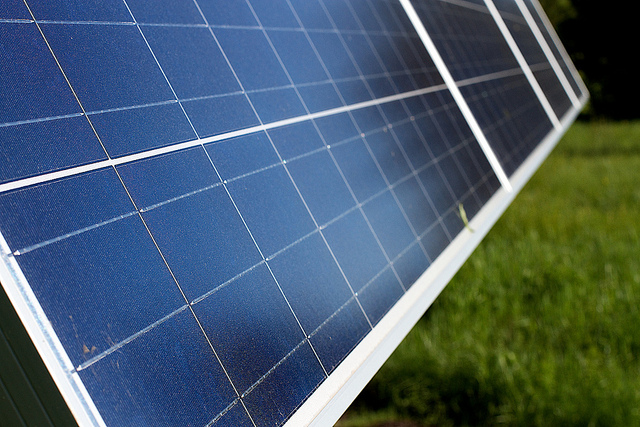The future of environmental well-being seemed hopeful last year to many in faith communities, with the publication of Pope Francis’s encyclical Laudato Si’ in June, the finalization of the Clean Power Plan in August, and the successful outcome of the Paris Climate Change Conference (COP21) in December, one year ago.
2016, however, offered very mixed news. On the one hand, the Paris agreements were ratified by 114 countries representing almost 79% of global emissions, and went into effect on November 4, 2016.
On the other hand, President-elect Donald Trump has threatened to pull the U.S. out of the agreement, and his stance remains uncertain.
The EPA announced a new methane rule that will not only prevent waste of natural gas but also cut greenhouse contributions from a gas that is far more potent than carbon dioxide. The rule’s goal is to cut methane emissions from oil and gas drilling by 35%, a move increasingly important as natural gas replaces coal. The Bureau of Land Management also introduced a rule limiting methane releases on public lands.
Yet President-elect Trump chose Myron Ebell, climate contrarian and energy and environment director at the coal-industry-funded Competitive Enterprise Institute, to lead the EPA’s transition team, and fossil-fuel supporter, climate denier, and EPA opponent Scott Pruitt to direct our country’s only agency for protecting the environment.
Many analysts have been hard at work assessing which policies are most vulnerable to erasure and where our hopes may lie. While the next administration can and likely will deter climate action, it cannot stop it. At the November COP 22 meeting in Marrakech, nearly 200 countries reaffirmed their promise to tackle the challenge of climate change, refusing to allow one country, however significant, to “cancel Paris.” In fact, U.S. delegates presented a long-term strategy to reduce U.S. carbon emissions by 80% by 2050.
American businesses are joining them. In an open letter to the president-elect, more than 360, including Starbucks, General Mills, Kellogg, and Hewlett Packard, called on him to uphold the Paris agreements and to “support the low carbon economy at home and abroad.” Businesses you wouldn’t expect, like Monsanto, DuPont, eBay, Tiffany & Co., and Hilton, joined certified B Corporations well known for their eco and social values, such as Patagonia, Ben & Jerry’s, Seventh Generation, and Fetzer. Carbon-free mutual fund managers like Pax World, Trillium, and Green Century joined the list.
And religious folks appeared as well: the Presbyterian Church (USA), the Unitarian Universalist Association, and many orders of Catholic sisters.
Most encouraging of all are the numbers that underlie these commitments. Corporations are realizing how much money they can save by reducing their energy waste. And the price of renewable energy is becoming comparable to that of coal and gas.
What about the church? If our government cannot act, can we, like businesses and like other nations, press to address our generation’s most urgent needs?
If people of faith believe in loving and preserving God’s good creation, how long until every congregation in the U.S. boasts its own green ministry and its own solar panels?
While climate disruption has been tragically politicized, at root its threat is a moral question, which clergy leaders can bring to their congregations: Do we love our neighbors, here and abroad, who have contributed the least to atmospheric carbon and stand to suffer the most from its effects?
If we do love our neighbors, as the gospel instructs, what will we do to show it?
The following is a sampling of lectionary passages in January and February that invite, or even demand, environmentally sensitive preaching.
January 1 (First Sunday after Christmas)
- Psalm 148 calls upon the created universe — sun, moon, stars, heavens, waters, sea monsters, fire, hail, snow, frost, storm, mountain, hill, fruit trees, cedars, wild and tame animals, creeping things, flying birds, kings and commoners, men and women, young and old — all to praise God together.
- Hebrews 2:10-18 describes our universal kinship through God.
- Matthew 2:13-23 describes the brutal slaughter of the innocents by Herod, reminding us of the dangerous political world with which every reformer, including our Savior, contends.
January 8 (Baptism of the Lord)
- Isaiah 42:1-9 places God’s restoration of the suffering nation parallel to God’s mighty acts in creating heavens, earth, and all inhabitants.
- Psalm 29 describes God’s majesty over powerful features of ancient Israel’s natural world: the sea, Lebanon’s gigantic cedars, and Kadesh’s fierce wilderness.
- Matthew 3:13-17 narrates Jesus’ baptism in terms recalling the world-changing flood in Noah’s day — God’s choosing of one for redemption, and the saving message conveyed through a dove.
January 15
- Psalm 40:1-11 employs features of the natural world as metaphors describing both dangers from which God delivers and security in God’s deliverance.
- John 1:29-42 imagines Jesus as a lamb and the Spirit as a dove.
January 22
- Isaiah 9:1-4 uses the rhythm of night and day to describe despair and hope.
- Psalm 27:1, 4-9 draws images from the natural world, describing God as “light” and “rock.”
- Matthew 4:12-23, invoking Isaiah 9, employs the metaphor of light.
January 29
- Micah 6:1-8 calls the mountains and hills as witnesses in the prophet’s accusations of his hearers.
- Psalm 15 proclaims that the righteous will dwell on God’s holy hill.
- Matthew 5:1-12 locates Jesus’ teaching on a mountain.
February 5
- Isaiah 58:1-9a (9b-12) contends that who practice economic justice will be like watered gardens, whose springs never fail.
- Matthew 5:13-20 compares the faithful to salt and light.
February 12
- Deuteronomy 30:15-20 foresees blessing and prosperity in the land for those who serve God.
- 1 Corinthians 3:1-9 compares the Corinthians to a garden, planted and watered by apostles, but grown by God.
February 19
- Leviticus 19:1-2, 9-18 calls for environmental justice for the poor, offering them the gleanings of agricultural growth.
- 1 Corinthians 3:10-11, 16-23 claims that each created individual is God’s temple.
- Matthew 5:38-48 reminds Jesus’ hearers that, in God’s fairness, the sun rises and the rain falls on both righteous and unrighteous humans.
February 26, Transfiguration Sunday
- Exodus 24:12-18 employs mountain, cloud, and fire to magnify God’s glory in the giving of the ten commandments (see also Psalm 99).
- Matthew 17:1-9 employs another mountain to magnify Jesus’ glory in the transfiguration (see also 2 Peter 1:16-21).

